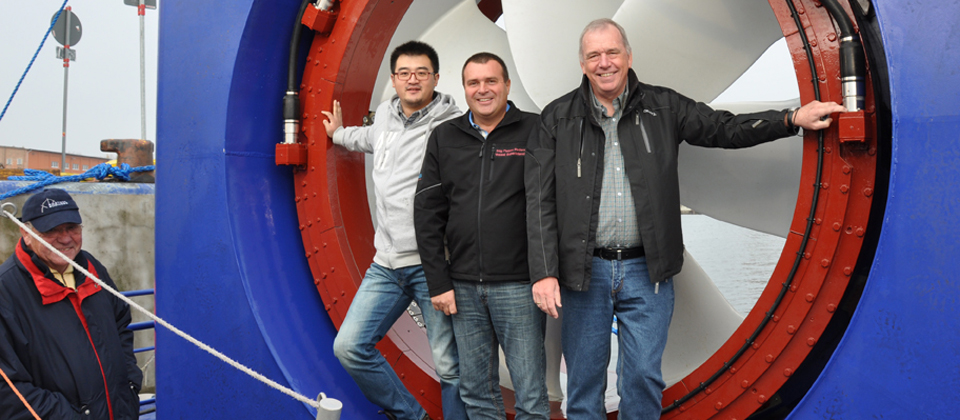
By Malte Bruun, Master, SEA INSTALLER
One of the most exciting – and promising – parts of SEA INSTALLER’s design has always been its positioning and propulsion system. And, now that the vessel has been hard at work for the past six months, we’ve had a chance to see how this system works in the real world of wind turbine installation.
When considering SEA INSTALLER’s design, we emphasized how important it is to achieve accurate positioning even in the worst of conditions. You have to be able to get into a safe position, maintaining a safe distance from the foundation, while making sure you are within the minimum lifting radius. Then there’s the subsea cabling – interfering with that can be a very expensive affair indeed. And, with components such as nacelles becoming larger, it’s not a task that will get any easier in the future.

Malte Bruun, Master, SEA INSTALLER
SEA INSTALLER features a Kongsberg DP-2 system, and three Voith Schneider propellers with 3,800kW of propulsion power each to enable fast, responsive manual positioning. So we can get water thrust immediately in any direction, which is a fantastic capability. It’s also a fully redundant system, which means we have station-keeping capability even if the system loses the function of a major component. For example, there are two operator stations and several motion reference units.
So just how good are SEA INSTALLER’s positioning and station-keeping capabilities? As an example, with its DP2-based system SEA INSTALLER can put its legs 20 meters down in a two-knot side current with up to 14m/sec of side wind speed in worse weather conditions than would otherwise be possible.
That said, I’m of the opinion that the DP system, which has become a client requirement for most turbine installation projects, should primarily be seen as an aid to assist manual positioning – an excellent additional capability where accurate positioning and station-keeping is particularly important.
But there are many factors in relation to such a system that mean that having experienced people who can handle the task manually is of vital importance. One such factor is the need to continually have a more “human” sense of the wind. Another is the challenge of entering and exiting a harbor under a variety of conditions. In particular, transitioning from maneuvering using the DP system to the point at which the legs touch the sea bed requires careful handling, because if you are, say, 30 cm off what the DP system is expecting, it will try to adjust after the legs are down. So you need to be ready to shut down the system quickly and smoothly to avoid any interference. It’s pretty challenging, but it is also a maneuver the ship’s master has trained again and again as part of getting to know the new vessel.
Of course, training in the use of the system has been exhaustive. It began with three days in a functionality simulator in Heidenheim, Germany. This type of simulator lets you try to operate the system via a desktop program. You can adjust the speed at which the propulsion system operates, including the amazing speed at which it can change thrust direction. This was followed by two three-day sessions at the Maersk Training Center in Svendborg where there is a full mission simulator with a realistic bridge setup and a 3D dynamic handling model. One round of training was completed prior to starting work at Anholt. Another round was conducted before work began at Belfast – and this involved local pilots from the port so that we could benefit from their experience and advice.
With an advanced system like this, comprehensive training and the experience of a good ship’s master, SEA INSTALLER is currently the best-positioned vessel in offshore wind energy.
 A VIT2300-1500 Voith Inline Thruster with an input power of 1,500kW is installed in the bow. According to Voith, this is the largest thruster to use permanent magnet synchronous technology, commonly known as RIM drive. The VIT is claimed to offer extremely low noise emissions, very smooth running and low vibrations, compared with conventional thrusters.
A VIT2300-1500 Voith Inline Thruster with an input power of 1,500kW is installed in the bow. According to Voith, this is the largest thruster to use permanent magnet synchronous technology, commonly known as RIM drive. The VIT is claimed to offer extremely low noise emissions, very smooth running and low vibrations, compared with conventional thrusters.
(Feature photo above by Ole Risbjerg Pedersen)
Like this post? Subscribe now and get notified about new content!
